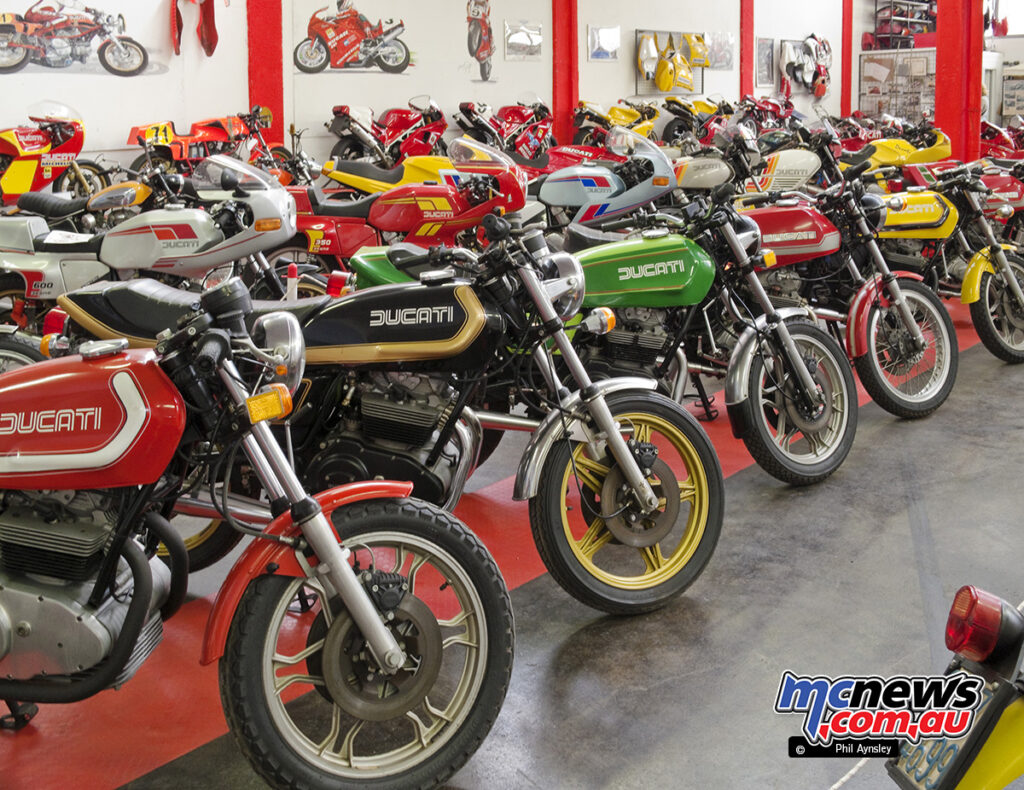Ducati 500 Sport Desmo
With Phil Aynsley
I covered Ducati’s first production parallel twin, the 500GTL, in an earlier column (link). Now we can have a look at the more successful follow up models.
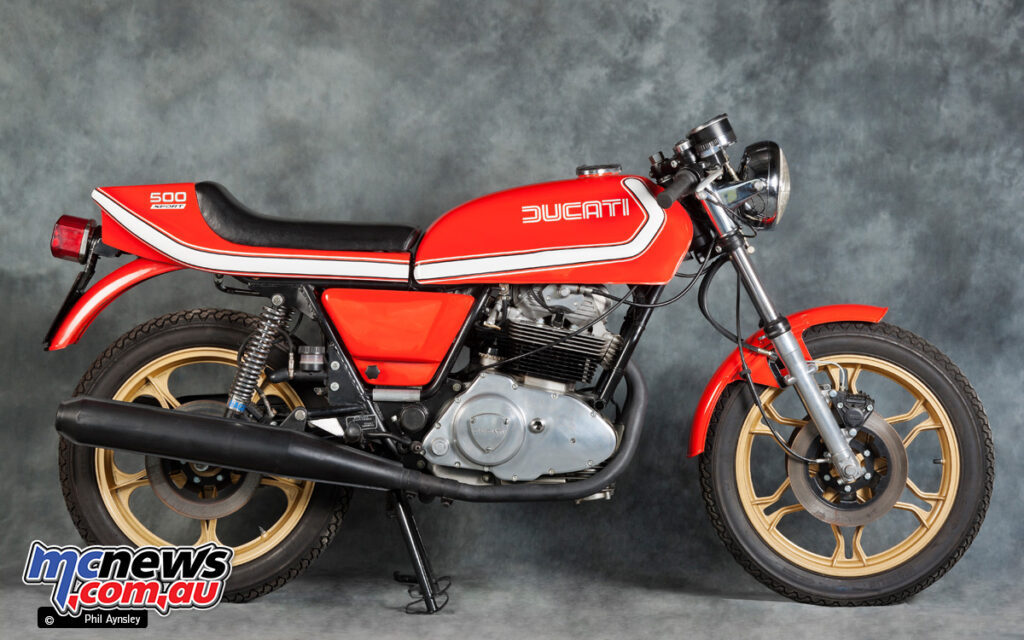
Due to the public’s poor response to the GTL the company rapidly introduced the Sport Desmo the following year, 1976. Leo Tartarini was responsible for the new styling (later used on the Darmah V-twin) which completely transformed the look of the bike.
While the change to Desmo valve operation was the biggest engine modification, other improvements included the compression ratio being raised to 9.6:1 and together with larger 30 mm carburettors the result was a power increase to about 50 hp at 8500 rpm – a marked improvement over the GTL’s 35 hp! Weight however had risen from 170 to 185 kg.
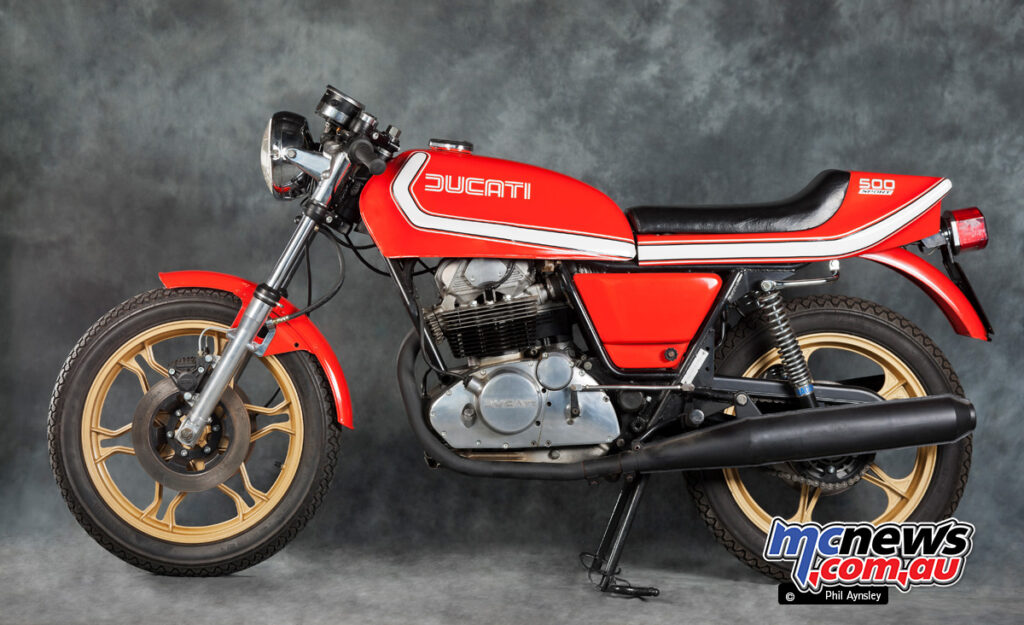
Other changes from the GTL were the use of a double downtube frame (still using the motor as a stressed member), cast FPS wheels and a rear disc brake.
A 350 cc version was also built with 1,166 produced up until 1980. The one seen here was imported to gauge demand and probably the only one in Australia. It is original condition and ridden regularly.
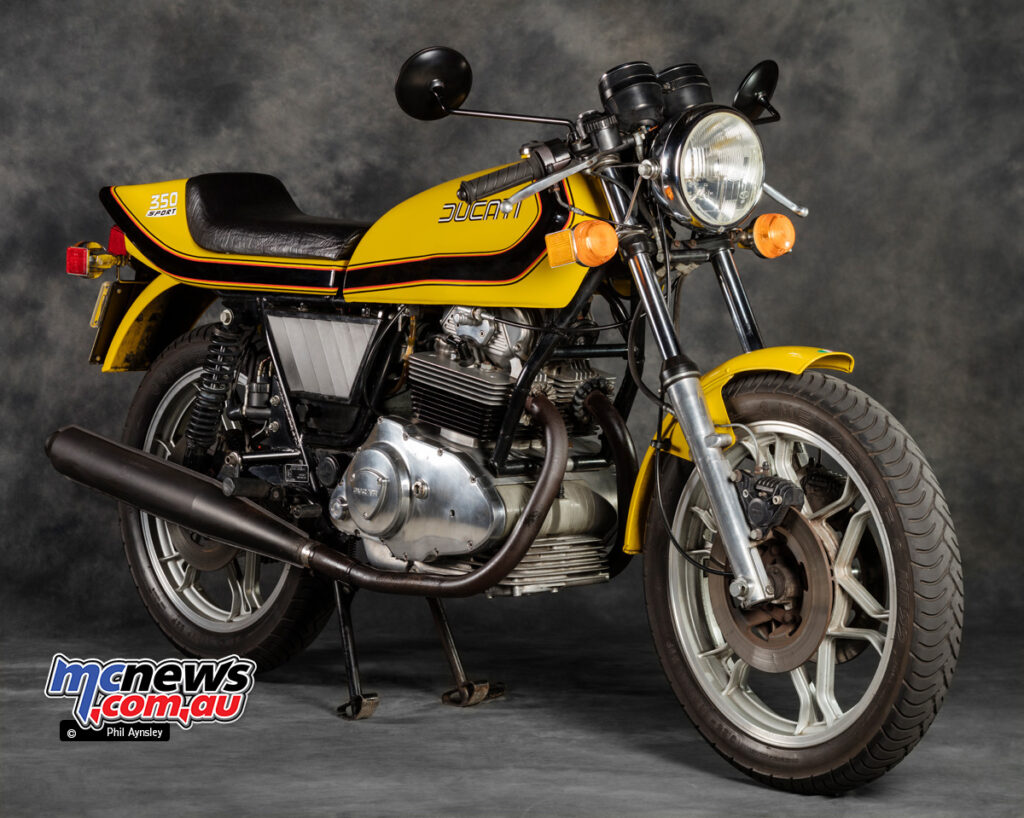
Given Australia was Ducati’s largest export market during the ‘70s we received reasonable quantities of 500 Sport Desmos with 224 reaching these shores.
Interestingly the bike seen here is one of the final batch of 67 Sport Desmo’s requested by the Australian importers Frasers in 1983, four years after the previous order. As with Frasers’ 1978 orders of the 750GT and Sport, this last batch of 500 Sport Desmo’s were also likely built from parts.
The only difference to the earlier bikes was the use of Oscam wheels – although this bike has one of each! It is fitted with aftermarket Hagon rear shocks and a dogleg clutch lever.
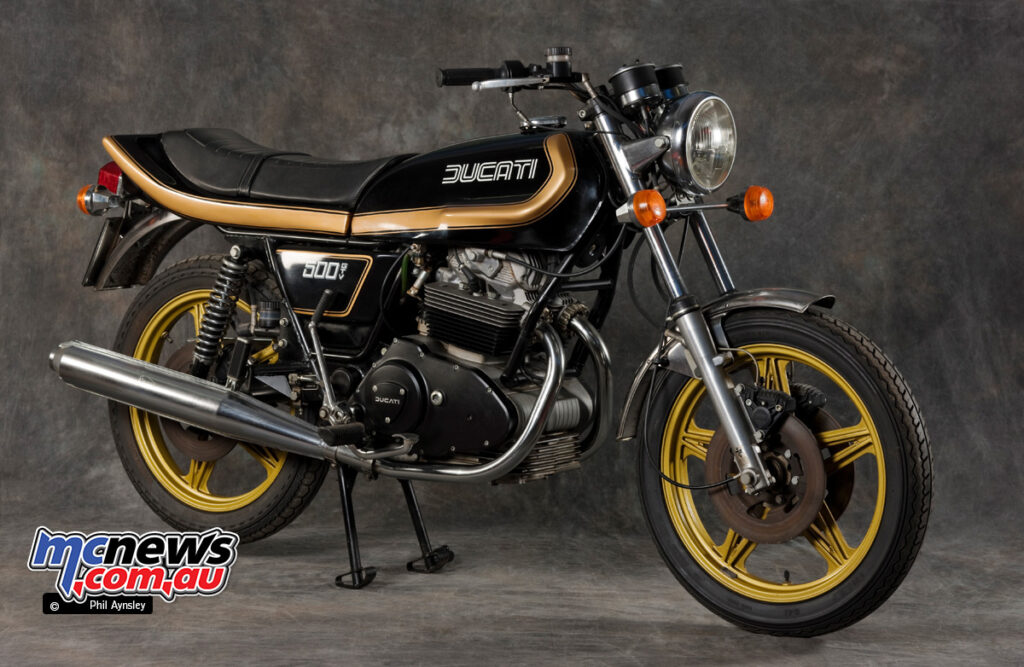
The 500GTV replaced the GTL in 1977 and used the styling and chassis of the Sport Desmo with the valve-spring heads of the GTL.
Differences to the SD included the engine cases being painted black, different body work paint colours, a kick starter, higher handlebars and a full dual seat.
Production ceased in 1981 with 700 500s (36 imported to Australia in ‘77) and 958 350s built.
